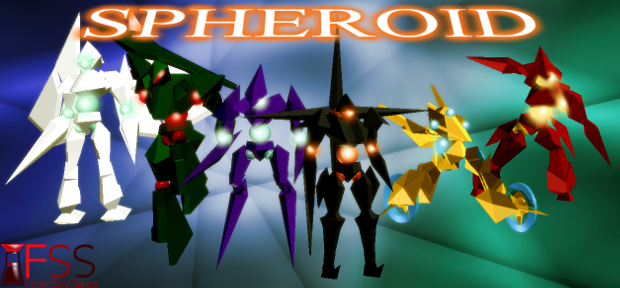A couple of weeks ago, Spheroid’s IndieGogo campaign ended with the game raising only a small part of its goal. It raised $1,157 of its $7,500 goal. I got in touch with the developers behind the game and asked them a few questions about their experience and future plans.
FSS’s Developers were not overly disappointed in the funds raised. What they raised was enough to release what they consider a good game, just not as good as what they had wanted. So they still plan on getting the game done and released for those who backed it.
When discussing the Kickstarter, FSS’s Founder expressed some difficulty in trying to run the campaign and work on the game at the same time. But he did learn a few valuable lessons about goal setting. He mentioned specifically that smaller goals would have possibly helped the success of the campaign. Rather than focusing on a goal that had most of what they wanted in the game. It would have been better to have had a smaller goal and included other features as stretch goals.
It was hard to run the campaign, while still trying to make progress making the game. The most important thing I learned was that small green bars are invisible. That said, I have also learned from other campaigns that low-low goals have a tendency to overflow a lot, especially when they use stretch goals to deliver the true goals of what they want the game to be.
Kuni had learned some lessons about the overall design of the game. He learned that a lot of people were not happy with the graphics of the game. Many people felt that the graphics of the game were too outdated. According to Kuni, he had hoped that fans of indie games would have liked the retro look, much like the 2D retro styled games. The opinions of potential fans just left him surprised.
I knew that the basic graphics are far from today’s standards. But at the same time, I thought it was kind of new, and interesting, and though this type of game would never be able to sell in a main market, I thought the more artistic and original indie game community would overlook it and recognize that it is an indie game, and indie games can take all sorts of shapes and sizes. It, for the most part, appears that I was wrong and people don’t want to go back to basic 3D models anymore. (Even for indie games) This doesn’t seem to be a problem for 2D games, or sprite games, interestingly enough. But as far as 3D games goes, there are much higher standards for how an indie game should look.
Another point of contention was the lack of tutorials or instructions with the game. While they worked to make the game as simple and familiar as possible to control, many people were not happy with the lack of instructions in the demo. This is a simple enough fix for the demo, but it was something that stood in the way of potential backers.
They plan on making modifications and updates to the game’s demo and continue to work on and finish Spheroid with the funds they have. They might also consider another campaign for it, but they have other projects that want to work on as well. Which seems to be the best as they have found through this campaign that the potential market for Spheroid is relatively small.
Overall, I am really impressed with the work these guys did. It takes a lot of work to attempt a crowdfunding campaign and they put a lot of effort into it. Although they did not reach their goal, they did learn a lot about the market for the game, which is one of the most important lessons they could learn. We wish them luck in completing Spheroid and we look forward to seeing what they have planned next.






